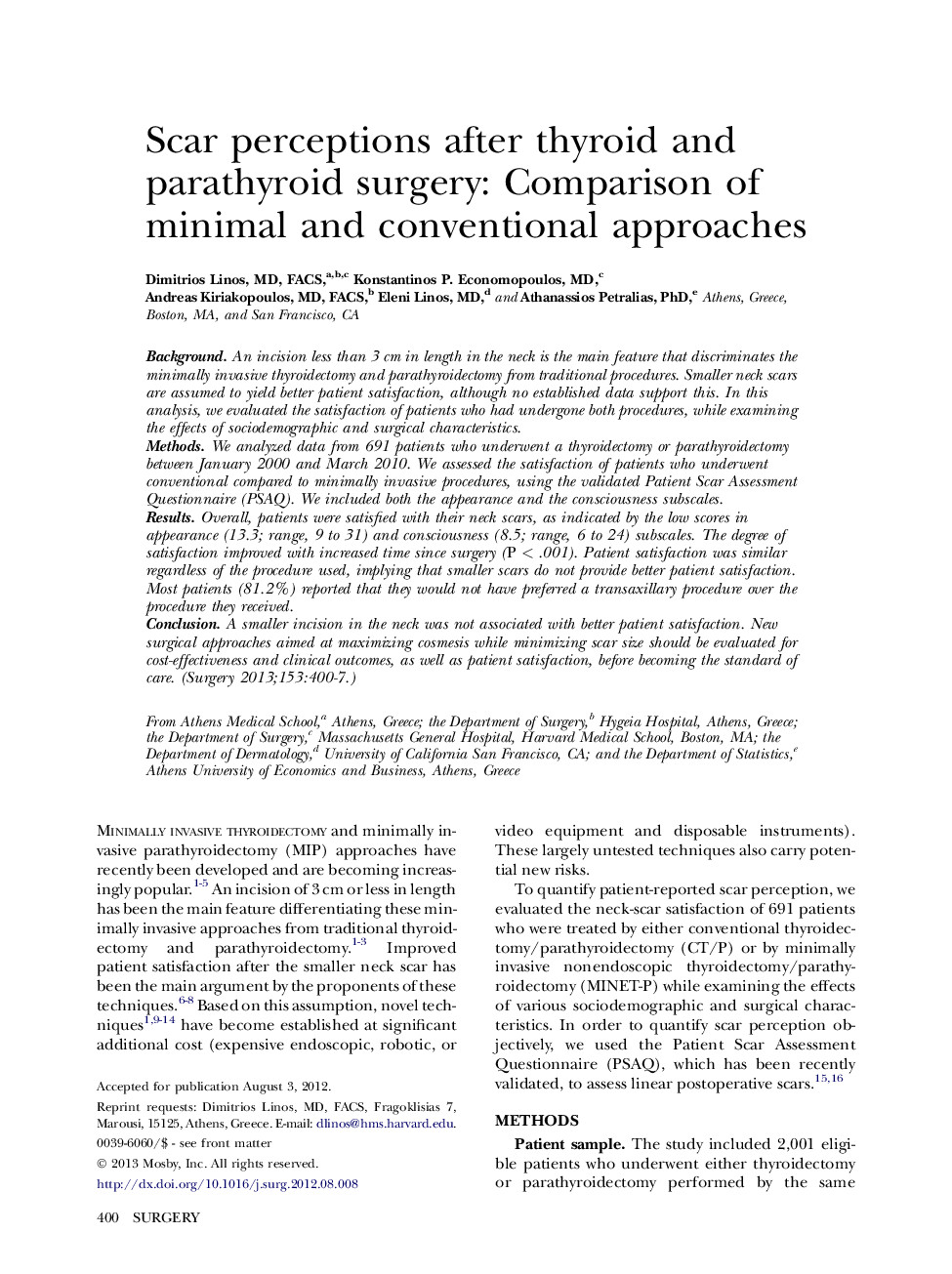| Article ID | Journal | Published Year | Pages | File Type |
|---|---|---|---|---|
| 4307926 | Surgery | 2013 | 8 Pages |
BackgroundAn incision less than 3 cm in length in the neck is the main feature that discriminates the minimally invasive thyroidectomy and parathyroidectomy from traditional procedures. Smaller neck scars are assumed to yield better patient satisfaction, although no established data support this. In this analysis, we evaluated the satisfaction of patients who had undergone both procedures, while examining the effects of sociodemographic and surgical characteristics.MethodsWe analyzed data from 691 patients who underwent a thyroidectomy or parathyroidectomy between January 2000 and March 2010. We assessed the satisfaction of patients who underwent conventional compared to minimally invasive procedures, using the validated Patient Scar Assessment Questionnaire (PSAQ). We included both the appearance and the consciousness subscales.ResultsOverall, patients were satisfied with their neck scars, as indicated by the low scores in appearance (13.3; range, 9 to 31) and consciousness (8.5; range, 6 to 24) subscales. The degree of satisfaction improved with increased time since surgery (P < .001). Patient satisfaction was similar regardless of the procedure used, implying that smaller scars do not provide better patient satisfaction. Most patients (81.2%) reported that they would not have preferred a transaxillary procedure over the procedure they received.ConclusionA smaller incision in the neck was not associated with better patient satisfaction. New surgical approaches aimed at maximizing cosmesis while minimizing scar size should be evaluated for cost-effectiveness and clinical outcomes, as well as patient satisfaction, before becoming the standard of care.
